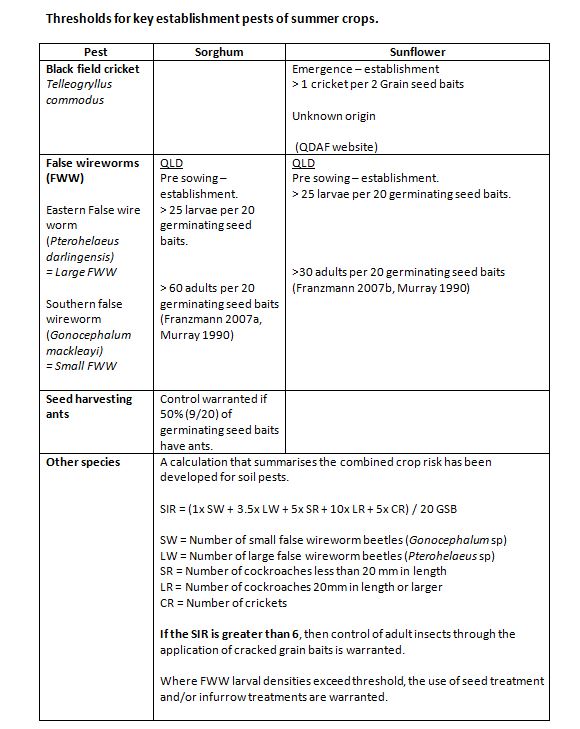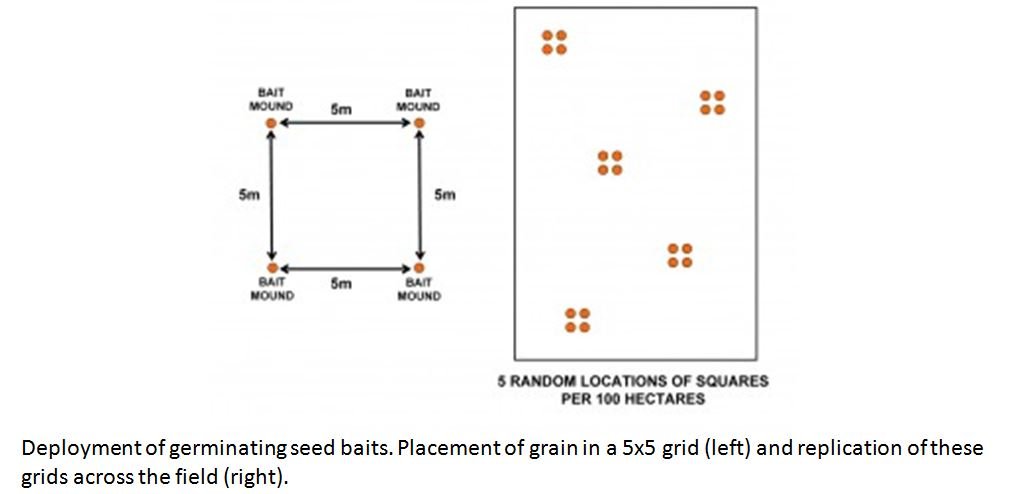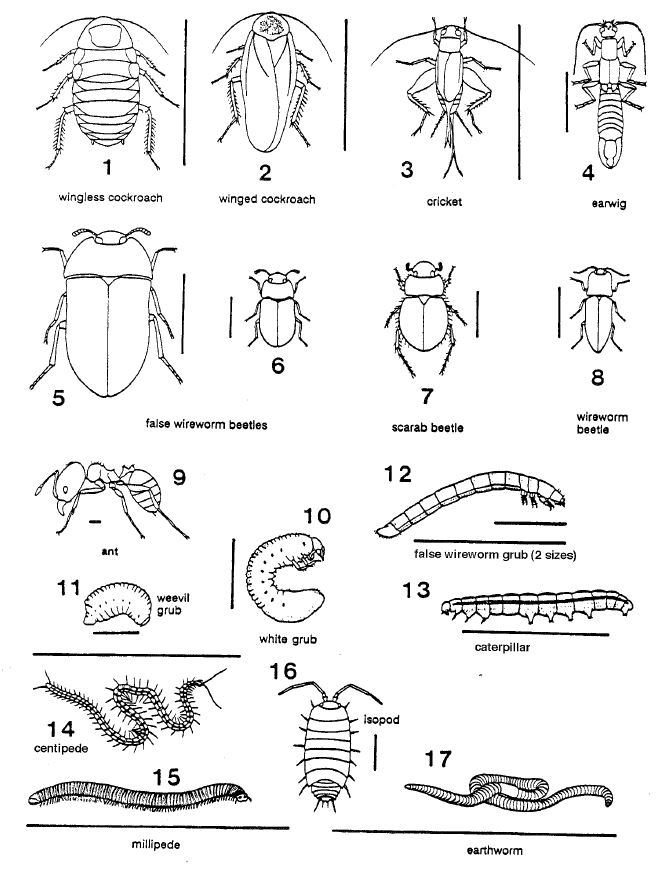Where there is a history of soil insect damage resulting in poor crop establishment a pre-sowing inspection of the affected fields is warranted to determine the likely risk to the upcoming summer crop.
Grain baits are an effective way of monitoring for soil-dwelling insect pests of summer crops, and is preferable to sampling with a shovel, which is both time consuming and unreliable.
Germinating seed baits (GSB) are the best option for determining the presence and numbers of both above and below ground species.
Don’t feel like reading about it? Click here to watch a video on GSB preparation and deployment .
There are a number of species that can contribute to poor crop establishment. Some of these feed on the germinating seed below ground (false wireworms, true wireworms and seed harvesting ants). Others are surface-dwelling and attack the seedlings as they emerge, defoliating and cutting off seedlings (false wireworm beetles, wingless cockroaches, earwigs and crickets). The surface-dwelling species are largely active at night, adding to the difficulty of effectively sampling them.
This article covers the key information on thresholds, the preparation and deployment of germinating seed baits.
Preparing and using germinating seed baits for detecting soil insects prior to sowing.
Preparation
• Germinating grain baits (GSB) work best when placed in the field after rain. If no rain is imminent, then the area around the baits should be watered to ensure the grain continues to germinate and seedlings emerge.
• Any seed is suitable. Sorghum, wheat and sunflower have been shown to be equally attractive to the soil insects of interest.
• Soak a kilogram of insecticide-free crop seed in water for at least two hours (preferably overnight) to initiate germination. For more rapid assessment, soak the grain until shoots appear.
Setting baits up in the field
• Use 20 GSB for each 100 ha block.
• Place the germinating grain at 5 widely-spaced sites across each 100 ha block. At each site place four half-handfuls of grain in a 5m x 5m grid (see figure). Cover the grain with 1 cm of soil, and mark the position of each bait so they can be easily found.
• If the soil surface is dry you can bury the baits deeper on the interface of the moist soil. Alternatively, water the baits in to ensure continued germination.
Checking the baits
• Plan to check the baits in 3-5 days, longer if it is cooler. For maximum efficacy, the baits should be germinated and shoots emerging from the soil surface. Some of the soil insects are attracted to the seed (FWW larvae, wireworm larvae, seed harvesting ants) and other species to the emerging shoots (FWW beetles, wingless cockroaches, crickets, earwigs).
• Dig up the baits and surrounding soil (a shovel full) and place on a tray or similar for examination.
Recognising the key species
Common soil animals. Lines beside each drawing provide an indication of actual sizes.
Source: DPINote: Soil Insects and other small soil animals in Queensland Crops.



